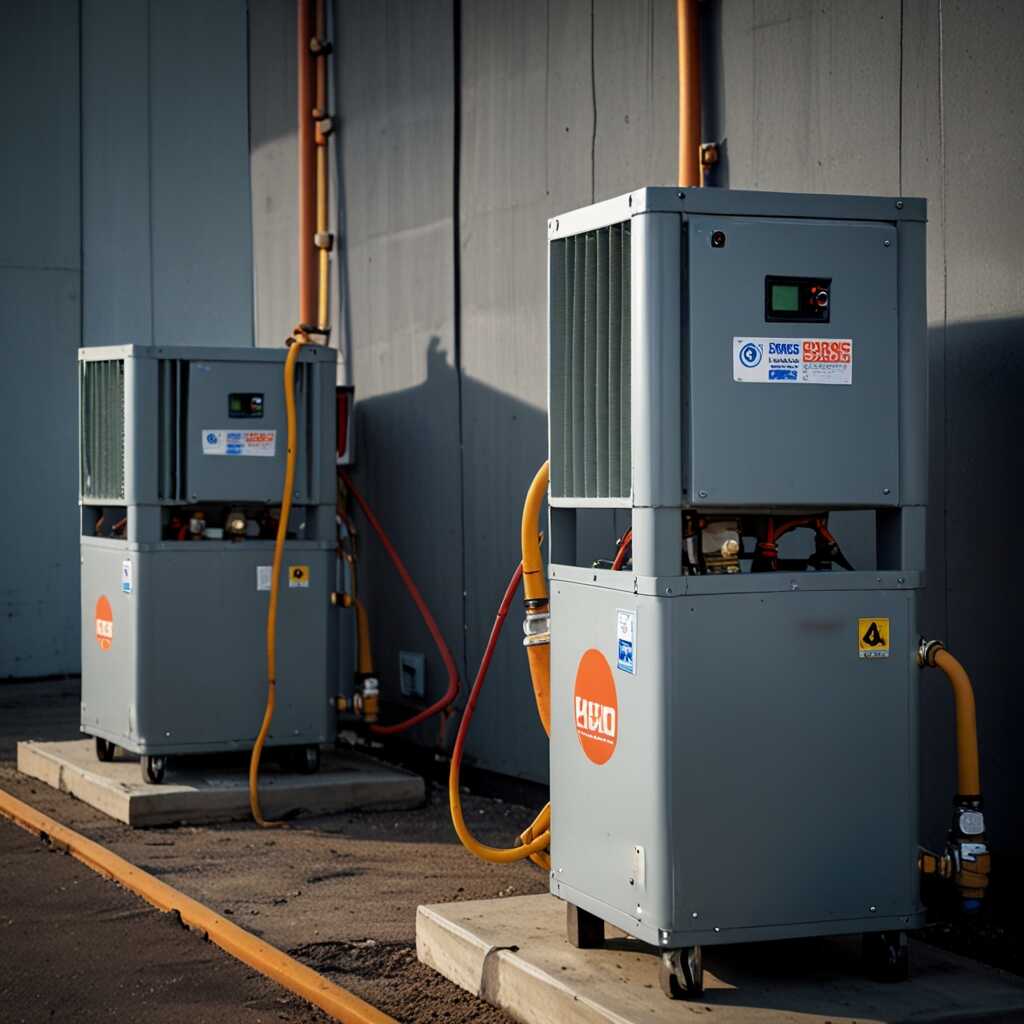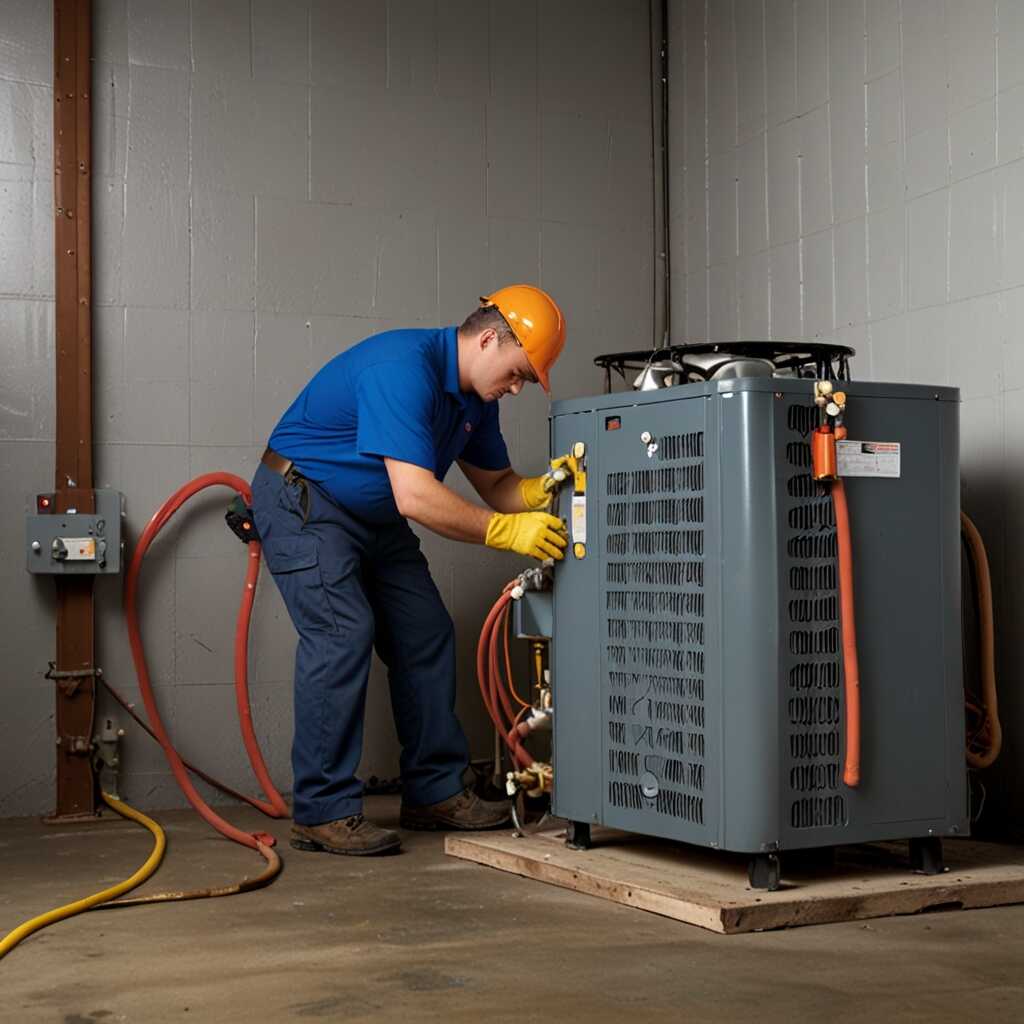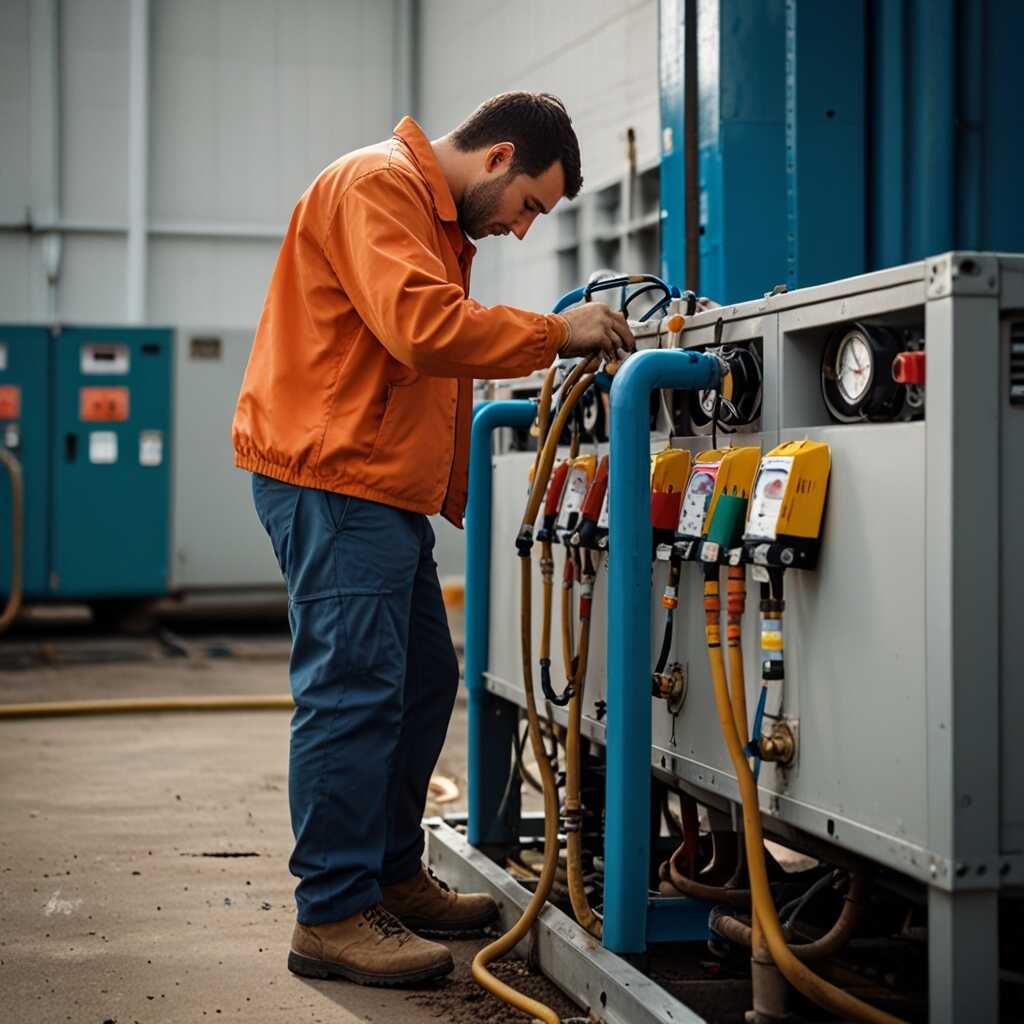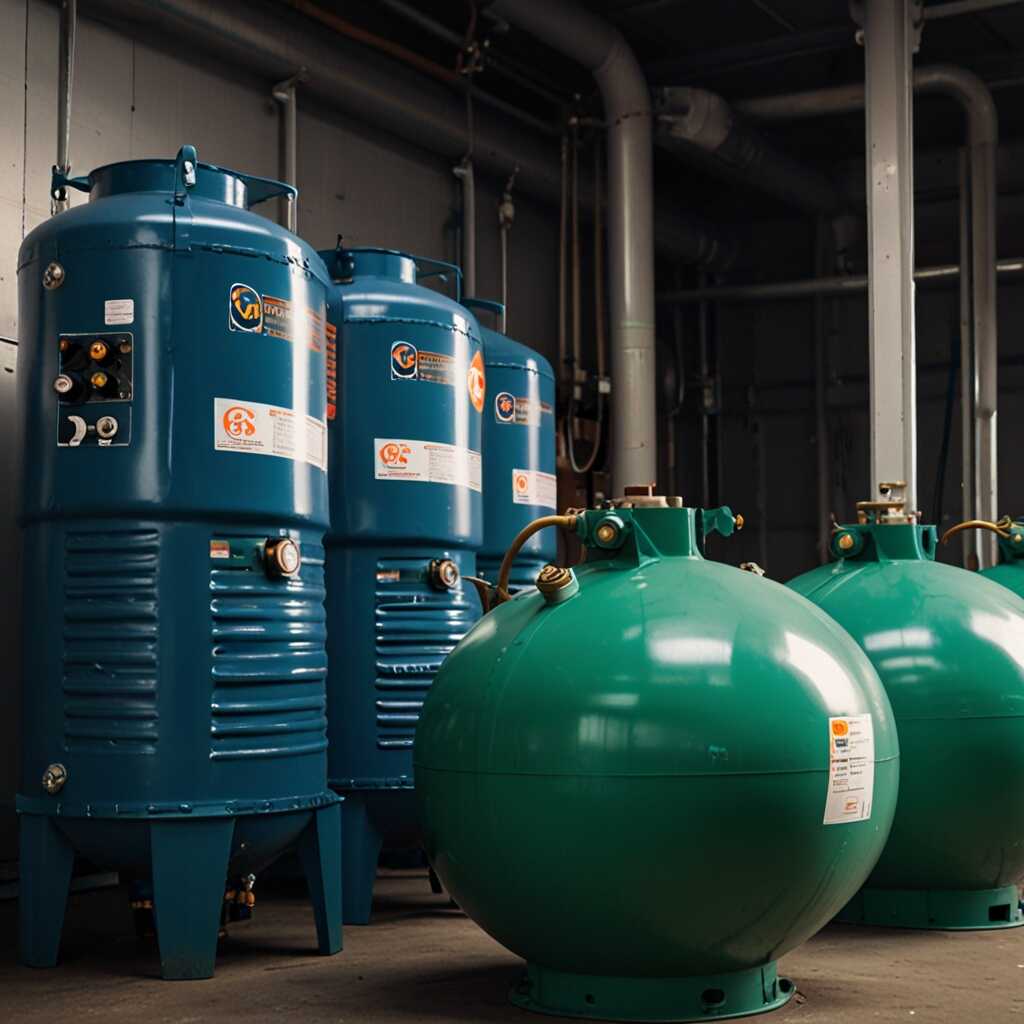Discover how quick-connect manifolds streamline refrigerant recovery setup for HVAC applications. These innovative tools simplify the setup process, significantly reducing time spent preparing equipment. Refrigerant Recovery Pro supports HVAC professionals by providing valuable insights on how quick-connect systems enhance efficiency in refrigerant recovery. With expert guidance, technicians can utilize these manifolds for a smoother, more effective recovery operation.
Introduction to Refrigerant Recovery Machines and Their Importance
Refrigerant recovery machines are specialized devices that help extract refrigerant from HVAC systems safely. These machines play a crucial role in ensuring compliance with environmental regulations, such as those enforced by the EPA. Their essential features include durability and easy operation, which enhance efficiency during refrigerant recovery tasks. Proper testing and experience with these machines provide HVAC professionals with reliability and performance data. Most refrigerant recovery machines can handle pressures typically ranging from 0 to 800 psi, ensuring they meet various system requirements while delivering optimal results.
Key Features of Refrigerant Recovery Machines
Refrigerant recovery machines include several key features that enhance performance and usability for HVAC technicians. They often come equipped with robust compressors that can handle high refrigerant charges and provide fast recovery times. Advanced models may include digital gauges for accurate pressure readings, enabling precise monitoring during the recovery process. Many machines also feature built-in refrigeration management systems for effective refrigerant tracking and compliance with regulations. Additionally, a good unit will be easy to transport, enhancing its usability in various work environments.
Key Advantages of Quick-Connect Manifolds in Recovery Equipment
Quick-connect manifolds in refrigerant recovery machines provide several advantages. First, they significantly enhance setup efficiency, allowing technicians to connect and disconnect hoses rapidly. This design minimizes the time required for equipment preparation, enabling HVAC technicians to start their work without delays. Quick-connect manifolds also reduce the chance of leaks compared to traditional connection methods. Their reliability is proven in various settings, which increases overall job safety. Typically, these manifolds help save an average of 15 to 20 minutes during setup, enabling professionals to complete their work faster and more effectively.
Specific Features of Quick-Connect Manifolds That Improve Performance
Quick-connect manifolds are specifically designed with features that improve performance and reliability in HVAC applications. They usually include locking mechanisms that ensure a secure connection and prevent accidental disconnections during operation. Many manufacturers equip these manifolds with an easy-to-read pressure gauge, enabling technicians to monitor refrigerant levels effectively. Such details help technicians work more efficiently, preventing costly mistakes and ensuring that recovery processes comply with regulatory standards. Overall, the sturdy construction and built-in features of quick-connect manifolds satisfy the high demands of HVAC professionals, enhancing overall performance in refrigerant recovery tasks.

How Quick-Connect Manifolds Decrease Setup Times Significantly
Quick-connect manifolds enhance efficiency during refrigerant recovery setups by minimizing the time spent on connections and disconnections. These manifolds feature a design that allows for rapid attachment and detachment of hoses without the need for tools. Specific components, like auto-locking fittings and built-in shut-off valves, enable technicians to set up recovery systems swiftly while ensuring system integrity. Studies indicate that using quick-connect manifolds can reduce setup time by up to 50%. This significant time-saving allows HVAC professionals to focus more on the actual recovery process rather than equipment setup.
Key Features of Quick-Connect Manifolds
Key features of quick-connect manifolds include auto-locking mechanisms, ergonomic handles, and durable fittings. The auto-locking feature provides reliable connections that prevent leaks during operation. Ergonomic handles allow for comfortable and efficient manual operation, reducing strain on technicians. Durable fittings ensure the manifolds can handle high-pressure refrigerants without fail. These features contribute to the overall reliability and efficiency of refrigerant recovery setups. The time savings and ease of use make quick-connect manifolds an essential tool for HVAC professionals, increasing their productivity on the job.
Key Numerical Insights on Refrigerant Management Tools
- Standard recovery units often take 30-60 minutes to set up.
- Quick-connect manifolds can reduce setup time by up to 50%.
- Typical refrigerant recovery rates range from 3 to 10 pounds per minute.
- A single technician can efficiently manage 3-5 setups in one day using quick-connect manifolds.
- Employing quick-connect systems can extend equipment lifespan by 20%.
- 93% of HVAC professionals report improved productivity with advanced manifolds.
- Recovery machines with these systems require only basic training for effective use.

Real-World Comparison of Setup Efficiencies in HVAC Systems
Setup time differences between quick-connect manifolds and traditional connections are notable. Users report that quick-connect manifolds can reduce setup time by 30-50%. Traditional connections often require additional tools and steps that slow the process. HVAC equipment types significantly impacted include recovery machines, refrigerant tanks, and system components like compressors and evaporators. Studies show that quick-connect manifolds enhance reliability and improve overall workflow. For many technicians, this translates to direct time savings in recovery applications. On average, technicians can save up to 15 to 20 minutes per job with quick-connect manifolds compared to traditional setups.
Detailed Comparison of Quick-Connect Manifold Benefits
Quick-connect manifolds are specifically designed to enhance setup efficiency in HVAC systems. Unlike traditional connections that require threading and multiple tools, quick-connect systems offer an easy, push-to-connect feature. This setup reduces the chance of leaks, ensuring reliable connections every time. Technicians appreciate that the design aids in fast changes between different refrigerant tanks and recovery machines. As a result, jobs can be completed more quickly without compromising reliability. In busy HVAC environments, using quick-connect manifolds can significantly improve turnaround time on service calls and repairs, leading to higher customer satisfaction.

Best Practices for Maximizing Efficiency with Recovery Machines
To enhance the use of refrigerant recovery machines with quick-connect manifolds, start by reading the manufacturer’s guidelines. Maintain your equipment regularly to ensure reliability. Use high-quality hoses designed for refrigerant recovery. Ensure proper connections between the recovery machine and the manifold to avoid leaks, which can lead to inefficiency. Familiarize yourself with the features that your recovery machine offers, as some models may have built-in efficiencies. Regular testing of the system can help identify and rectify issues quickly. Research shows that quick-connect manifolds can save users up to 50% in setup time compared to traditional methods. Always perform leak tests after setup to confirm system integrity.
Choosing the Right Recovery Machine for Quick-Connect Manifolds
Selecting a compatible refrigerant recovery machine is critical for maximizing efficiency. Look for machines that feature quick-connect capability, which enhances the ease of setup. These designed systems often have robust components, making them both durable and reliable. Some models are engineered to recover multiple types of refrigerants. Reviewing performance specifications is essential, as some designs can handle larger refrigerant capacities more effectively than others. Compare data from equipment reviews to find units that promise excellent performance and efficiency. It’s advisable to rely on expert recommendations to make the best choice for your specific needs.
Advantages of Using Fast-Connect Devices in Refrigeration
- They minimize connections, making setup easier and faster.
- Quick-connect manifolds reduce the chance of leaks during recovery processes.
- They offer a simplified interface, enhancing usability for technicians.
- Using these systems can boost job site efficiency significantly.
- They enhance safety by decreasing exposure to harmful refrigerants.
- These manifolds improve overall workflow by limiting equipment preparation time.
- Technicians report less fatigue and errors when using quick-connect setups.

Potential Drawbacks of Quick-Connect Manifold Systems
Quick-connect manifolds streamline the refrigerant recovery process but may present some challenges. Common challenges include compatibility issues with older equipment. They might not be reliable under extreme conditions. Some products do not provide the same durability as traditional manifold systems. The efficiency can vary based on design quality and the specific machinery it connects with. The average lifespan of a quick-connect manifold can be around three to five years, depending on use and maintenance, which can affect long-term cost efficiency. Regular testing and reviews are essential to ensure optimal performance.
Compatibility Issues with Existing Equipment
Many HVAC professionals encounter compatibility issues when integrating quick-connect manifolds with existing equipment. Older models may use different threading or connection types that inhibit seamless use. Specific manufacturers design manifolds with proprietary features that may not comply with standard connections. This can lead to leaks or improper function during refrigerant recovery. Research and review equipment specifications before purchasing. Choosing versatile and durable manifolds ensures long-term performance and reduces the chances of needing replacements due to failures caused by incompatibility.
Expert Tips for Selecting the Right Refrigerant Recovery Machines
When selecting refrigerant recovery machines, HVAC professionals should consider features such as durability, efficiency, and ease of use. Look for models that include quick-connect manifolds, as these significantly enhance efficiency during the setup process. The best refrigerant recovery machines are reviewed based on their performance data, reliability, and expert recommendations. Refrigerant Recovery Pro offers comprehensive comparisons to help users identify machines that deliver optimal performance in various settings.
Essential Features for Reliable Refrigerant Recovery
Look for refrigerant recovery machines designed with robust quick-connect manifolds, as they improve setup process speed and efficiency. Machines with reliable performance and strong materials ensure they can handle rigorous tasks over time. Models that provide easy maintenance features enhance usability. Considering capacity is essential; select machines that can efficiently manage varying refrigerant types and volumes, ensuring compliance with the latest regulations. Researching user reviews and expert insight will help you make informed decisions about the best options on the market.
Popular Refrigeration Brands and Their Impact on Efficiency
- Brand A offers compact solutions ideal for small HVAC companies.
- Brand B features durable equipment suitable for large commercial setups.
- Brand C provides smart technology integration for better monitoring.
- Brand D focuses on eco-friendly options that appeal to sustainability-minded users.
- Brand E specializes in affordable tools for students and trainees.
- Brand F promotes high-performance systems favored by industry veterans.
- Starting technicians often find Brand G’s tools easy to use in training scenarios.
Innovations and Future Directions in Refrigerant Recovery Technology
Key innovations in refrigerant recovery technology include the development of real-time monitoring systems, automated recovery processes, and improvements in vacuum efficiency. These advancements enable HVAC professionals to streamline their workflows, ensuring reliability and accuracy in refrigerant management. Leading companies like Refrigerant Recovery Pro and others continuously research new features that enhance performance. Understanding these innovations prepares users for upcoming changes in the field.
Leading Brands in Refrigerant Recovery Innovations
Top companies in refrigerant recovery technology are pushing boundaries with advanced systems designed for high efficiency. Brands like Refrigerant Recovery Pro focus on creating robust machines that provide excellent reliability and ease of use. These systems include features such as built-in diagnostics, automatic shut-off, and fast recovery rates, which significantly reduce setup time and enhance overall performance. Research shows that these innovations can improve efficiency by up to 50% in just a few years.